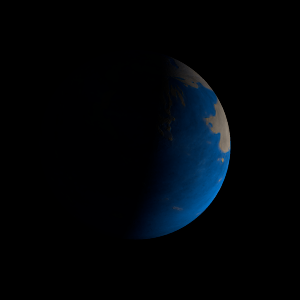|
|
Space Astro
|
Info for exoplanet "Nerikapo"
| Scientific (actual) data |
|---|
| Name | Kepler-229 d |
| Planet status | Confirmed |
| Radius | 0.343 |
| Orbital period | 41.1949 |
| Semi major axis | 0.22 |
| Discovered | 2014 |
| Updated | 2021-02-05 |
| Tconj | 2455000 |
| Impact parameter | 0.8 |
| Publication | Announced on a website |
| Detection type | Primary Transit |
| Alternate names | 2MASS J19075987+4822328 d, K00757.02, KIC 10910878 d, KOI-757 d, KOI-757.02, WISE J190759.88+482232.7 d |
| Star name | Kepler-229 |
| Right ascension | 287° |
| Declination | 48.38° |
| Mag j | 14.363 |
| Mag h | 13.868 |
| Mag k | 13.785 |
| Star distance | 845.88 |
| Star metallicity | -0.109 |
| Star radius | 0.73 |
| Star temperature | 5120 |
| Star alternate names | 2MASS J19075987+4822328, KIC 10910878, KOI-757, WISE J190759.88+482232.7 |
| Wikipedia article | Kepler-229 d |
Back
| |
| Fictional info (?) |
|---|
| Suggested name | Nerikapo |
| Planet type | Cold planet |
| The methane has probably photodissociated, and the free oxygen has been swept into interplanetary space by the solar wind because of the lack of a planetary magnetic field.
The largest moon is inhabitated by large stone-age plants, the "Bubigo To", which spend their life by eating something called Moge-shai-kyu. They are not related to the Tobine but have 4 eyes and vary in length from 40 to 100 meters. Bubigo To can withstand temperatures from 100 to 160°C and even ultra violet light. |
| Estimated population | 2600000000 |
| Atmosphere | Oxygen | 93% |
| Carbon dioxide | 6.8% |
| Methane | 0.012% |
| Water | 0.01% |
| Atmospheric pressure | 100 bar |
 |
| Moon | Yazogo Yanyo'gya | Large irregular gaseous comet |
| Google search for Nerikapo |
|
Website by Joachim Michaelis
|
|
|
|